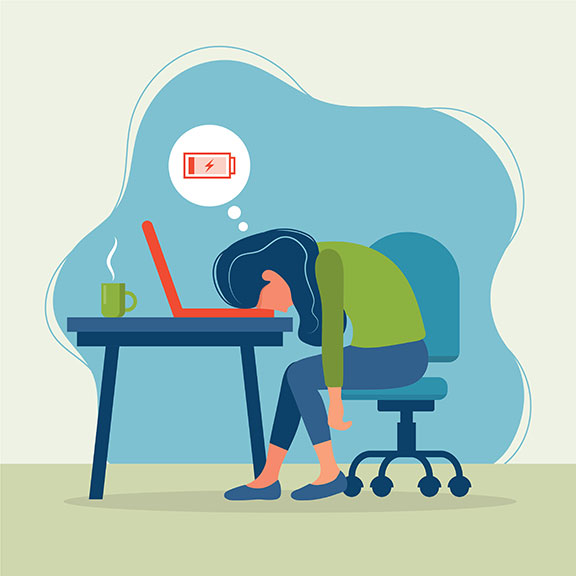Like many organizations, Think Up has been operating remotely since March, and virtual fatigue is setting in. Each day, our calendars are a line-up of one-on-ones, team meetings, and project working sessions—all via video call. And when the workday is done, there are still virtual gatherings with family, friends, and community organizations. It seems like an activity that can be conducted from the couch should be relaxing. But it turns out, the massive amount of video conversations we are partaking in right now can be even more draining than a day full of in-person interactions.
In an interview with the BBC, Gianpiero Petriglieri, an Associate Professor of Organizational Behavior at Insead, explained that being on a video call requires more focus than face-to-face conversations. “Video chats mean we need to work harder to process non-verbal cues like facial expressions, the tone and pitch of the voice, and body language; paying more attention to these consumes a lot of energy. Our minds are together when our bodies feel we’re not. That dissonance, which causes people to have conflicting feelings, is exhausting. You cannot relax into the conversation naturally,” Petriglieri stated.
In addition to the complexities of trying to virtually “read the room,” there are other challenges that tax people. Silence, while a natural part of conversations, can cause anxiety in a virtual environment. Is there a technical issue? Is the person not paying attention? There’s also the performative nature of video chats. Being on camera underlines the need to appear presentable and attentive. And let’s not forget the many technological malfunctions that occur on any given call, such as screen freezing and echoes.
There are, however, ways to fight virtual fatigue and stimulate engagement. Consider limiting video calls to those that are necessary and give people the option to turn off cameras, especially in larger meetings where they may not be actively participating the entire time. Try limiting the number of back-to-back meetings or including some buffer time, which can allow space for people to incorporate self-care like stretching, grabbing a drink, or doing a bit of exercise.
Lastly, infuse a little fun into meetings. Icebreakers and energizers can help people ease into conversation, feel more relaxed on camera, get comfortable with whichever conferencing platform is being used, and stimulate the mind for more productive meetings. There is a wealth of exercises available online, but Rick Andrews Improv and a community of collaborators have made things easy for all of us by compiling a helpful Google doc of quick and easy energizers for the virtual space.
We’ve been looking for ways to mix things up and keep our virtual meetings fun ourselves. We recently hosted a college-themed happy hour where Thinkers wore apparel from their alma mater and played a few rounds of Never Have I Ever. It was a simple yet effective way to get everyone on the call involved and swapping stories.
We have also established “Wellness Wednesdays,” where everyone has a 30-minute block on their calendar each week for a different activity to support our wellbeing and to get us up and away from our computers. A mid-day guided meditation, quick walk around the block, or stretching session is sometimes just the thing you need to break up a day full of video meetings.
A little empathy for participants and some creative thinking can go a long way in creating meetings that meet objectives and keep people engaged, while mentally refueling attendees.
Resources:
https://www.bbc.com/worklife/article/20200421-why-zoom-video-chats-are-so-exhausting



